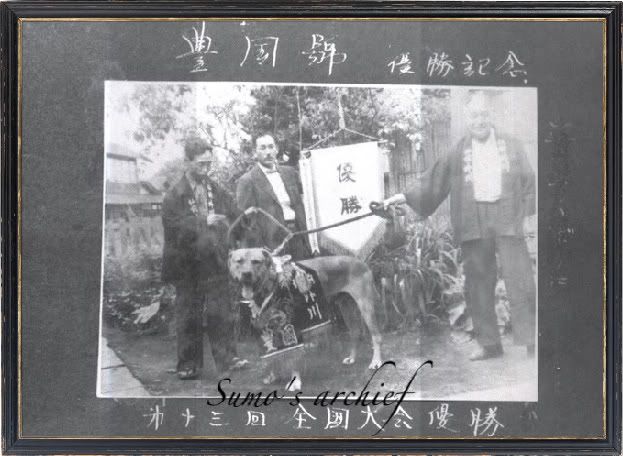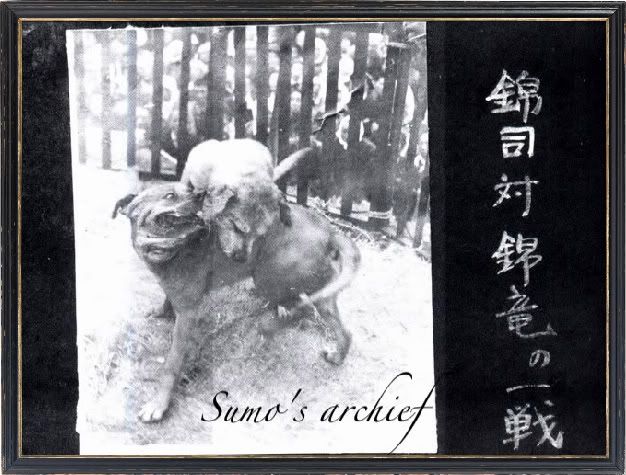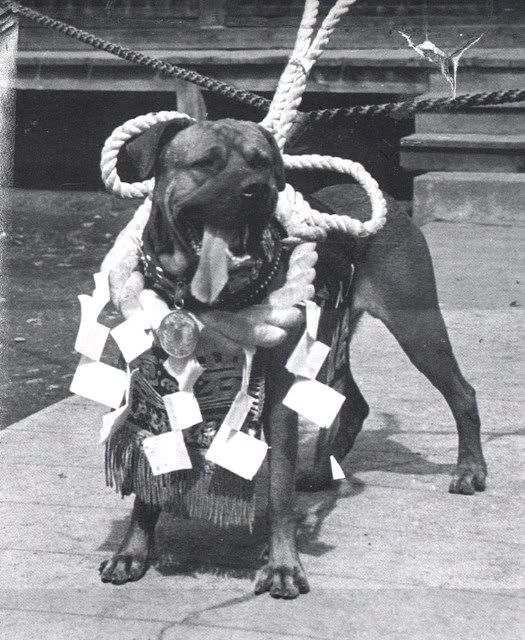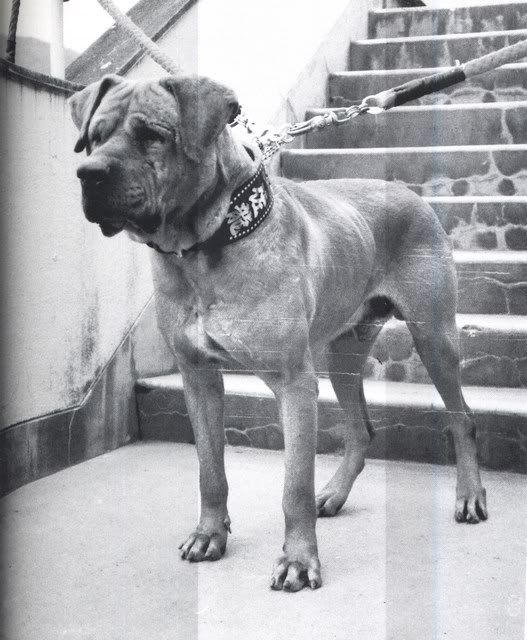Tosa


The Tosa Inu is still best known for its success and use in traditional Japanese fighting dog tournaments. The use of the Tosa has changed little over the years and the Tosa are rarely kept as pets or as guard dogs or as protection type.
The Japanese police, army and those who need special protection almost exclusively use imported German breeds like German Shepherd, Rottweiler or Malinois.
Since 1997, the Tosa Inu is divided by the JKC as a guard dog or a pet.
The JKC in Japan have little or no Tosas their registered. They are not involved in the breed and of course they placed the Tosa as a pet or guard dog, because she did not want to use the dog fights because of how it will be seen in the West. The majority of overseas sent Tosas was not the most desirable line Tosas as it clearly in the hands of the Western show breeders would be wasted, being the true fighting spirit and the true capabilities of the Tosa fighting could undermine. The Tosa in Japan has always been a working breed. Which means it was made for the fight in the ring and continues to excel in this particular area until today. In the West, dogfighting is not justified as legitimate work criteria and thus the Tosa conveniently as a working breed not put down. Upon contact with the JKC has never heard of Tosa's being shown in JKC events, so it's safe to assume that the Tosa in Japan only is used as a fighter. The western Tosa is the victim of the rare breed show crowd who know little of the true fighting aspects of breed and culture, and more importantly not strive to breed the traditional fighting spirit which is endowed with the Tosa. The gap between Western and Japanese Tosa shows more to expand.
There are several activities that will help to ensure a healthy physical Tosa more than just participate in clubs and dog shows. Weight pulling, big game hunting, AD, treadmill, and agility are great legal alternatives, which may Tosa can participate. A good physical Tosa should be easy to perform in these types of physical events and challenges as they receive the proper training and motivation. Japanese dog trainers recommend off strongly the use of the Tosa in protection, Schutzhund, or any other nature of this kind of work . The Tosa is a very powerful breed and if they have to be active against people is certainly irresponsible and contrary to the nature of the Tosa. That nature should be seen as stable and friendly to humans, but aggressive towards dogs and animals. There are many other varieties better suited for this work.
The Japanese opinion is that the fighting spirit of the Tosa and its ability in the ring is the first and most important criteria in breeding Tosa. Typically form follows function and those with terrible confirmation and bad hips may not excel in the ring.
Likewise, just because a Tosa has perfect confirmation and hips, but lacks the true fighting spirit and cannot perform, will not be bred. X raying hips for consideration certainly has its merits but is not widely practiced in Japan as most of the Tosa's that are bred would need strong hips to drive its opponent around in the ring during a bout.
Many of the Western Tosa's came from a small gene pool and maybe more prone to congenital diseases.
Certainly the conditions for a fighting Tosa in Japan would preclude individuals prone to disease to be fought or bred.
Most of the Japanese Tosa are extremely healthy and rarely if ever need veterinary care.





The APBT has been incorporated in the Tosa from the beginning. The APBT as it is known today was once commonly known as a bulldog, bull/terrier, etc. The first dog that was bred to the native Shikoku fighting Spitz was the old type bulldog, which from all historical accounts was very similar to the present APBT. Furthermore, there are pictures of the old APBT in old Tosa books from the early 1900's that were obviously crossed into the Tosa. The caption in those pictures reads "American Fighting Dog" which can only be the APBT. Therefore, the APBT as did the Mastiff, and other Western breeds did influence the early Tosa, indeed from the beginning.
More then 30 years ago the APBT was reintroduced to Japan and created interest with Japanese dog men. For it's size, the APBT showed great tenacity, strength and gameness even against the larger more powerfull Tosa. In some smaller Tosa fighting clubs such as the Yukokai and Hasshyu, pure catchweight APBT's compete against lightweight Tosa's and certainly mixes of the both are also prevalant in all Tosa Fighting associations today.
Remember the fighting clubs in Japan are not the confirmation social clubs. You bring Tosa's that can win, the color etc, are fairly insignificant.





There has been over a 100 years not a single document found where was stating that Bordeaux had any significant role played, like the St. Bernard, Bloodhound, or what breed is even mentioned on some websites.
In addition to the Bordeaux first recorded in Japan is a dog named "Grace" imported from France around 1920. Grace had to compete with its own different Tosas in Hokkaido, from a general manager of Tomakomai Oji Paper Company factory and had defeated them all. He was eventually defeated by a Tosa named Ushiya who was informed of the Aomori Prefecture by a man who was employed at the same factory where the owner of Grace was the manager. After this fight the man was fired because his boss had made so angry because Grace had lost.
Tosa in Hokkaido and Aomori were very different in those days than we used to nowadays and weighted average of only 30kg - 35kg. The best specimens were kept in Kochi.







The Mastiff in history has played a major role in the development of the Tosa Inu. Since that time a mastiff dog was a dog with a very flexible standard and there has always been more than the pointer type, type of Bulldog, APBT and Mastiff type . For the people in the development of the breed, construction, color was not really important. The standard by which all professional Tosa breeders in Japan to adhere to is first and foremost the physical ability of the individual dogs they breed. Color and other non-functional and physical characteristics are secondary and play a minimal role in breeding criteria. Briefly described, it brings Tosas that can win. The fighting spirit of the Tosa, which clearly differ Tosa to most of the Molosser type breeds, varieties are now known to have lost their original fighting spirit, tenacity, and overall physical capacity for prolonged and sustained leagues. In Japan in the ring, the Tosa Inu has no equal.






Comments
I really like those beefy collars in that last picture and the ones where the Tosas are wearing them. Very, very cool.
I have read in old dog books and one the more few site about Tosa
And talk to a breeder , owner of those.
So I find the history really interesting (as for the other Japanese dog breeds)
Thank you for all the images and all your wrote kimputai ^^
If you want a true friend, that will never let you down and is willing to learn anything
you want him to do, take a Tosa.
Visit breeders, ask health checks, blood tests.........see the dog run and move and don't judge a breeder by a nice website and a nice looking dog and the ribbons the dog has won.
And yes you are correct, if i ever decide i want a guard dog, i'll get a GSD. However, i think the tosa is a very interesting dog with a very interesting history.